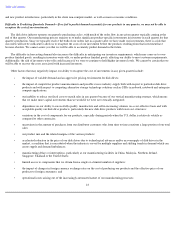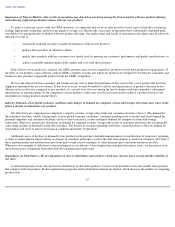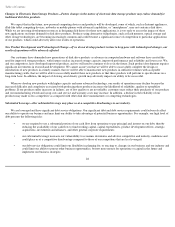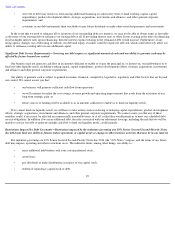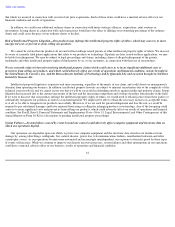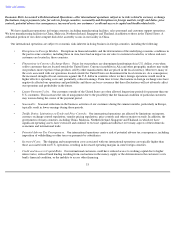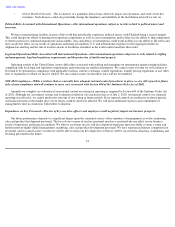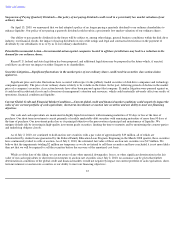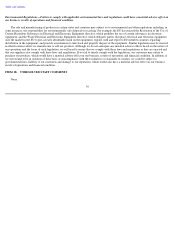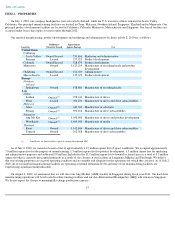Seagate 2009 Annual Report Download - page 30
Download and view the complete annual report
Please find page 30 of the 2009 Seagate annual report below. You can navigate through the pages in the report by either clicking on the pages listed below, or by using the keyword search tool below to find specific information within the annual report.
Table of Contents
Changes in Electronic Data Storage Products—Future changes in the nature of electronic data storage products may reduce demand for
traditional disk drive products.
We expect that in the future, new personal computing devices and products will be developed, some of which, such as Internet appliances,
iPad-like tablet computing devices, netbooks or mobile phones with advanced capabilities, or "smartphones", may not contain a disk drive.
While we are investing development resources in designing disk drives for these new applications, it is too early to assess the impact of these
new applications on future demand for disk drive products. Products using alternative technologies, such as flash memory, optical storage and
other storage technologies, are becoming increasingly common and could become a significant source of competition to particular applications
of our products, which could adversely affect our results of operations.
New Product Development and Technological Change
—If we do not develop products in time to keep pace with technological changes, our
results of operations will be adversely affected.
Our customers have demanded new generations of disk drive products as advances in computer hardware and software have created the
need for improved storage products, with features such as increased storage capacity, improved performance and reliability and lower cost. We,
and our competitors, have developed improved products, and we will need to continue to do so in the future. Such product development requires
significant investments in research and development. We cannot assure you that we will be able to successfully complete the design or
introduction of new products in a timely manner, that we will be able to manufacture new products in sufficient volumes with acceptable
manufacturing yields, that we will be able to successfully market these new products or that these products will perform to specifications on a
long-term basis. In addition, the impact of slowing areal density growth may adversely impact our ability to be successful.
When we develop new products with higher capacity and more advanced technology, our results of operations may decline because the
increased difficulty and complexity associated with producing these products increases the likelihood of reliability, quality or operability
problems. If our products suffer increases in failures, are of low quality or are not reliable, customers may reduce their purchases of our products
and our manufacturing rework and scrap costs and service and warranty costs may increase. In addition, a decline in the reliability of our
products may make us less competitive as compared with other disk drive manufacturers or competing technologies.
Substantial Leverage
—Our substantial leverage may place us at a competitive disadvantage in our industry.
We are leveraged and have significant debt service obligations. Our significant debt and debt service requirements could adversely affect
our ability to operate our business and may limit our ability to take advantage of potential business opportunities. For example, our high level of
debt presents the following risks:
•
we are required to use a substantial portion of our cash flow from operations to pay principal and interest on our debt, thereby
reducing the availability of our cash flow to fund working capital, capital expenditures, product development efforts, strategic
acquisitions, investments and alliances, and other general corporate requirements;
•
our substantial leverage increases our vulnerability to economic downturns and adverse competitive and industry conditions and
could place us at a competitive disadvantage compared to those of our competitors that are less leveraged;
•
our debt service obligations could limit our flexibility in planning for, or reacting to, changes in our business and our industry and
could limit our ability to pursue other business opportunities, borrow more money for operations or capital in the future and
implement our business strategies;
28







